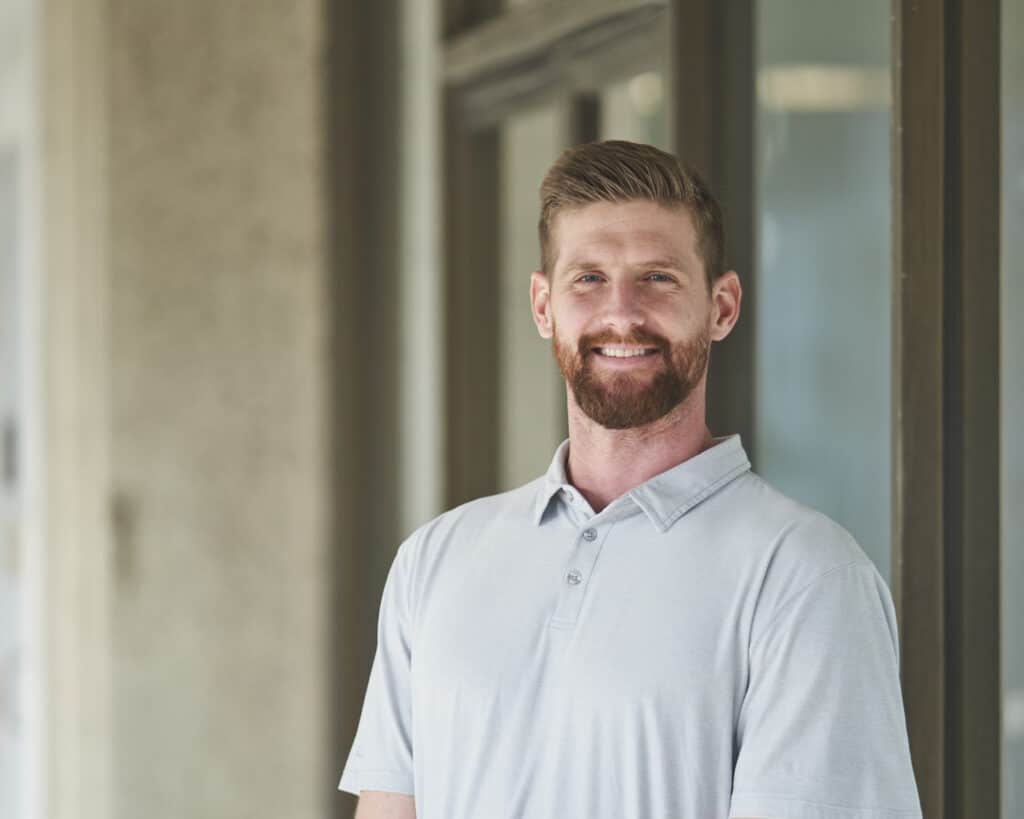
For assistant project manager Jason Wensley, there’s nothing more satisfying than seeing a blank canvas become a usable space. From a young age, he had an innate curiosity about how a piece of furniture or an electronic was a sum of its parts. Construction was a natural and obvious career path.
Now, Jason has 11 years of industry experience working for general contractors. He’s held the roles of field and senior engineer, estimator, and is currently an assistant project manager at Sundt. Throughout his experience, Jason has contributed to Sundt San Diego projects in the K-12 and higher education spaces, such as CSU Fullerton’s Housing Expansion, and is currently working on the whole site modernization of Marston Middle School.
He chatted with us about how he’s refined his expertise in project management.
How have you been able to hone your project management style?
Over the years, I’ve learned that as a project manager, it’s crucial to act as the consistent thread that connects the field to the office, which is all about relationship building. Everyone on our team—from craft to admin to our subcontractors—has valuable perspective to offer on possible solutions to challenges we encounter. My approach to project management involves hearing everyone out, facing challenges head on and bringing multiple solutions to the table.
What does your day-to-day as a project manager look like?
To summarize my role, it’s keeping track of all the moving parts of a project, while staying true to the big picture, client goals and project vision. I don’t have a “typical” day-to-day because each project I manage is vastly different. That’s exciting to me, though. As a project manager, you fill in where you are needed. Sometimes, that’s owning change management or acting as a liaison between the field and design team, ensuring the work runs smoothly and on schedule. Each day, there’s an opportunity to learn from the talented people I work with, and that’s what keeps the job interesting.
You mentioned part of your role is to streamline conversations from the field to the office. What strategies have you used to communicate successfully?
Even though not every job is a design-build contract, I bring that mentality to each project. You have to know what’s important to the stakeholders and remember that while it’s necessary to be process-oriented, it’s also crucial to keep in mind that we are humans working with humans.
Building trust in the varying relationships that exist on a project means being as upfront as possible, as soon as possible. Projects inevitably face challenges or changes; my aim is to be direct, but inclusive. I source opinions and solutions from everyone in the field, discern what is realistic and take those options back to our design team or client so they can make informed decisions as soon as possible.
Can you give an example of how this communication works in the higher education space?
A lot of my comments about communication are key for any project, however particularly in education. When we’re building in the higher education market, we hear out opinions from resident assistants, maintenance workers, security, the parking and transportation teams—any end user groups. Part of our mission to build better student housing means addressing California’s shortage of affordable housing for students. We want these buildings to be as suited as possible for living, working and playing.
What sets Sundt project managers apart?
At Sundt, I’m empowered to own my work, make the right choices and get the job done. We don’t get bogged down by the small things, and we keep the bigger picture in mind, while also knowing the project details better than anyone else. It’s a great feeling knowing there’s so much trust in me to lead our complex projects in San Diego.
Learn more about our California projects.